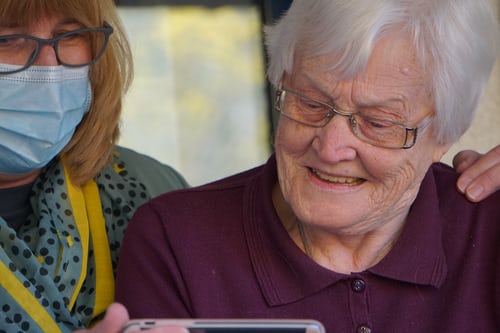
The Healthcare Laundry Accreditation Council (HLAC) cautions that improperly laundered linens can raise the risk of the spread of infection in senior living facilities. In a recent HLAC release, it says that its standards provide viable infection control safeguards to those facilities looking to tackle pandemic challenges and beyond. This, as the senior living industry finds itself under the microscope with new reports claiming that nursing homes, veterans homes, assisted living and similar long-term care facilities have accounted for more than 43,000 COVID-19 related resident and staff deaths.
“Ensuring that laundry is processed according to the highest standards in infection prevention must be a critical component of any infection-prevention program,” said Linda McCurdy, HLAC board president. “HLAC Accreditation Standards should be part of any discussion by those in charge of infection prevention at any type of senior living facility, big and small.” HLAC is a nonprofit organization formed 15 years ago to inspect and accredit laundries processing healthcare textiles (HCTs) for hospitals, nursing homes, and other healthcare facilities, including assisted-living establishments.
“As we’ve said in the past, the healthcare textile is the one common factor of every patient experience in their hospital or long-term care facility encounter,” McCurdy said. “Every patient’s and virtually every employee’s skin ultimately will touch a sheet, towel, bed pad, washcloth, bedspread, or blanket. No one is immune from this. If infection prevention is the goal, these scenarios demand the kinds of safeguards HLAC provides.”
McCurdy’s comments come as the infection plans of senior living facilities contend with increased scrutiny and heightened regulatory attention from organizations like the Centers for Medicare and Medicaid Services (CMS). Most recently, a report on a state-by-state analysis of COVID-19 fatalities noted, “…it is clear that the most underappreciated aspect of the novel coronavirus pandemic is its effect on a specific population of Americans: those living in nursing homes and assisted living facilities.”
Likewise, in its guidelines, “Preparing for COVID-19 in Nursing Homes,” the Centers for Disease Control and Prevention, advises: “Given their congregate nature and resident population served … nursing home populations are at high risk of being affected by respiratory pathogens like COVID-19 and other pathogens, including multidrug-resistant organisms. … As demonstrated by the COVID-19 pandemic, a strong infection prevention and control (IPC) program is critical to protect both residents and healthcare personnel (HCP).”
To this, HLAC’s McCurdy advised, “And any such IPC program would be wise to include a laundry component.”
She added, “Getting the lion’s share of the attention has been the challenges facing traditional nursing homes, but when it comes to infection prevention, it’s important not to overlook those senior living communities offering assisted living, independent living, continuing care and memory care services. And, again, HLAC’s standards offer viable safeguards for increased protection to the ‘2 million seniors and 1 million employees’ who live and work in these communities.”
According to McCurdy, HLAC-accredited laundries process HCTs based on the highest standards for patient safety and infection prevention. These HLAC Accreditation Standards have been developed based on federal regulations and guidelines as well as best industry practices. HLAC accreditation affirms that a laundry organization that processes HCTs has successfully passed an inspection of the following: its facility, policies and procedures, training programs, and its relationship with its healthcare customers.
Photo by Georg Arthur Pflueger on Unsplash













